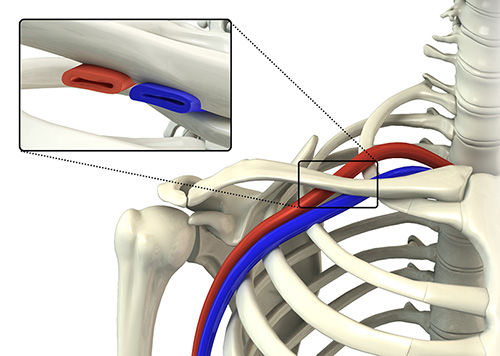Clinical Implications of Rounded Shoulders
- 5 Hours CPD Points Awarded Details Below

- Apr 23, 2024
- 2 min read
Updated: Apr 24, 2024
Introduction:
Rounded shoulders are more than just a cosmetic concern; they signify a postural imbalance that can have far-reaching implications for musculoskeletal health. In this exploration, we delve into the profound structural consequences of rounded shoulders, shedding light on the intricate interplay between posture and well-being.
Understanding Rounded Shoulders:

Rounded shoulders, characterised by a forward and inward rotation of the shoulder blades, often accompany a slouched posture and forward head position. This postural deviation is prevalent in today's sedentary society, exacerbated by prolonged sitting, excessive screen time, and poor ergonomic habits. Over time, the muscles in the chest and front of the shoulders become tight and overactive, while the muscles of the upper back weaken and lengthen, perpetuating the rounded posture.
Postural Implications: of Rounded Shoulders
Altered Spinal Alignment: Rounded shoulders disrupt the natural curvature of the spine, particularly in the thoracic region. The exaggerated rounding of the upper back (kyphosis) compresses the anterior aspect of the intervertebral discs and vertebrae, leading to structural changes such as decreased disc height and vertebral wedging. This spinal misalignment not only compromises biomechanical efficiency but also increases the risk of degenerative conditions such as osteoarthritis and disc herniation.

Muscular Imbalances: The imbalance between the muscles of the chest and upper back is a hallmark of rounded shoulders. The chest muscles, including the pectoralis major and minor, become chronically tight and shortened, pulling the shoulders forward and inward. In contrast, the muscles of the upper back, such as the rhomboids, middle and lower trapezius, and posterior deltoids, weaken and lengthen, unable to counteract the forward pull of the chest muscles. This muscular imbalance further exacerbates the rounded posture and contributes to discomfort and restricted movement.
Impaired Respiratory Function: Rounded shoulders can impair respiratory function by limiting the expansion of the thoracic cavity during inhalation. The decreased space between the ribs and the compromised position of the diaphragm reduces lung capacity and inhibits efficient breathing mechanics. Over time, this respiratory inefficiency can lead to shallow breathing patterns, decreased oxygenation, and increased fatigue.
Increased Risk of Injury: The altered biomechanics associated with rounded shoulders predispose individuals to a higher risk of musculoskeletal injuries. The compromised stability and mobility of the shoulder joints increase susceptibility to conditions such as rotator cuff strains, impingement syndrome, and shoulder instability. Additionally, the excessive strain placed on the cervical spine due to forward head posture can result in cervicalgia, headaches, and radicular symptoms down the arms.
Conclusion:
Rounded shoulders represent more than just a postural deviation; they signify a complex interplay of muscular imbalances, spinal misalignments, and biomechanical inefficiencies. As manual therapists, it is imperative to recognize the profound postural implications of rounded shoulders and implement targeted interventions to address these structural imbalances. Through a combination of soft tissue release, postural correction exercises, ergonomic modifications, and manual therapy techniques, we can empower our clients to restore optimal posture, alleviate discomfort, and enhance musculoskeletal health.





Comments